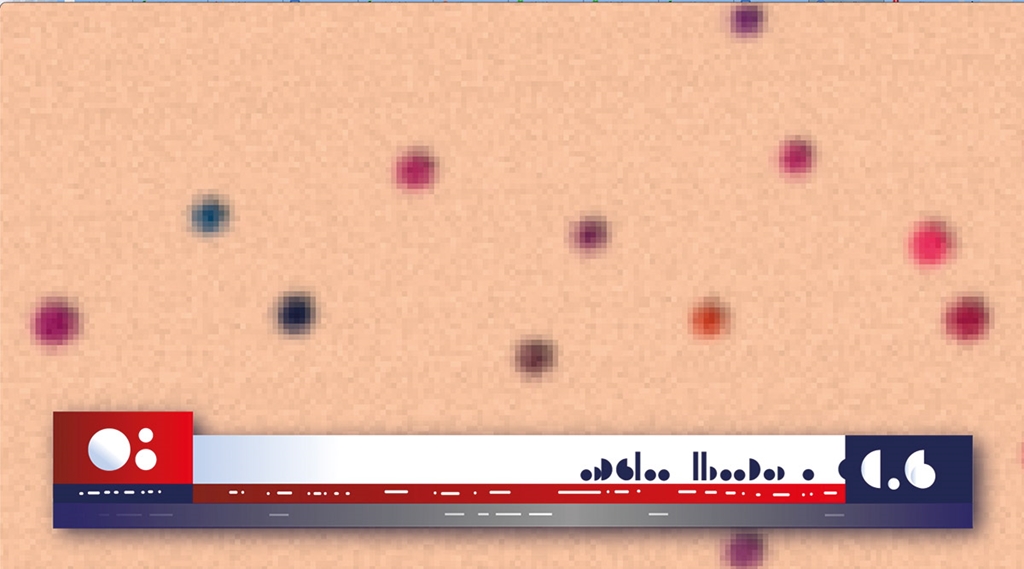
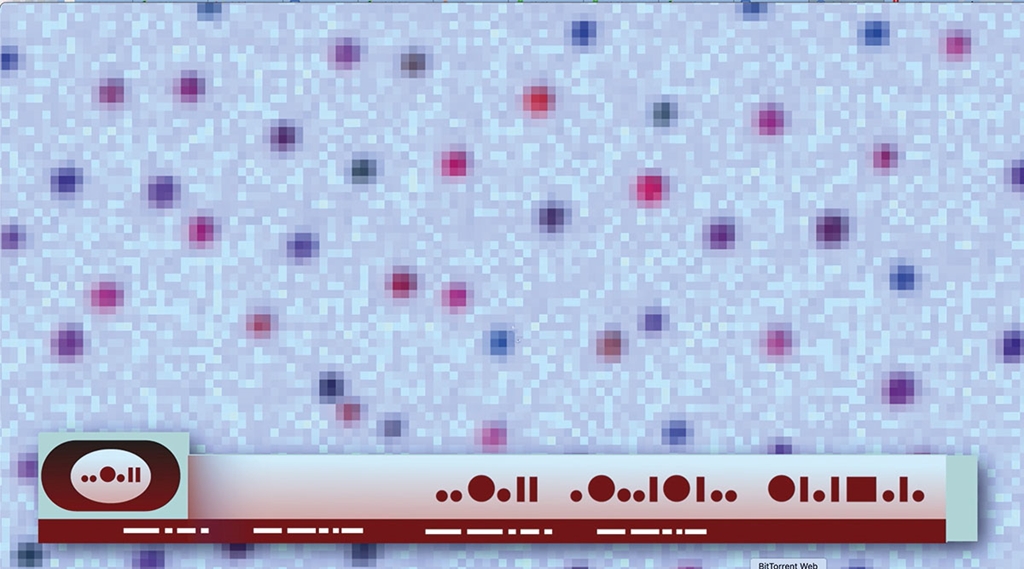
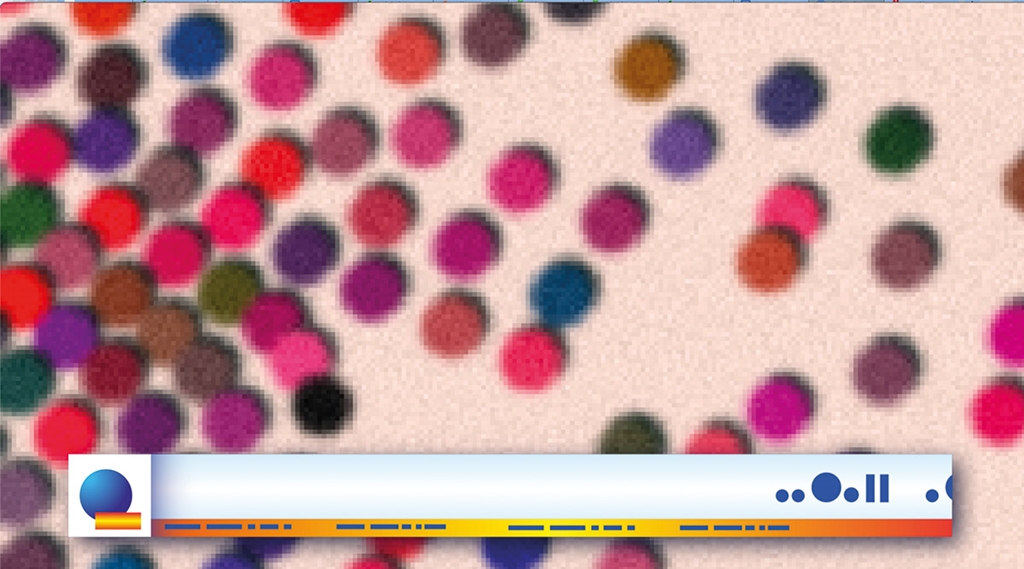
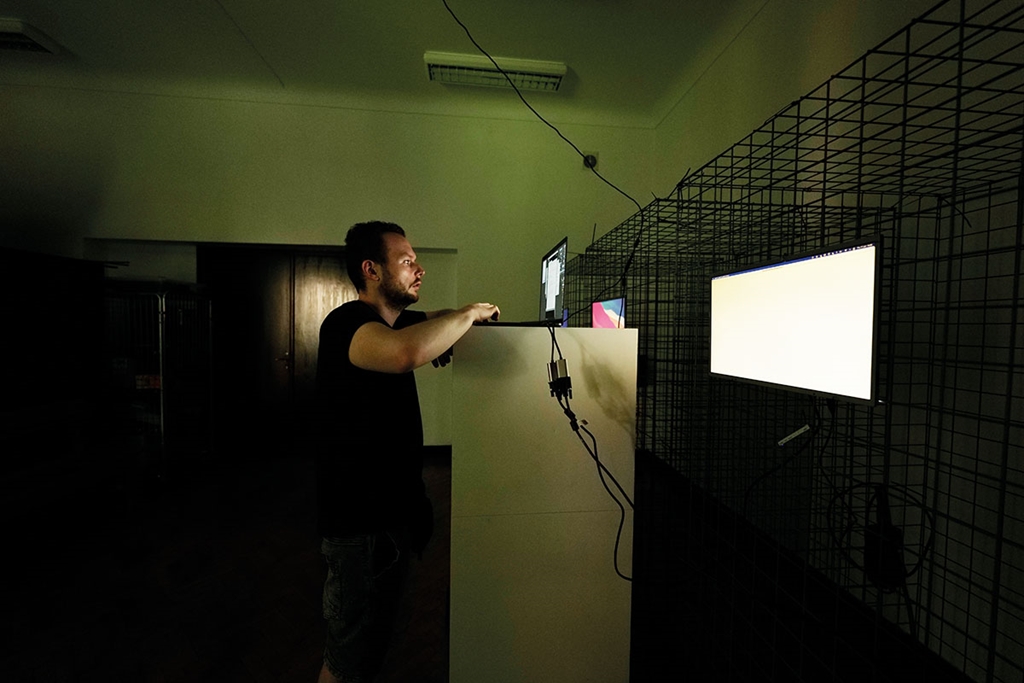
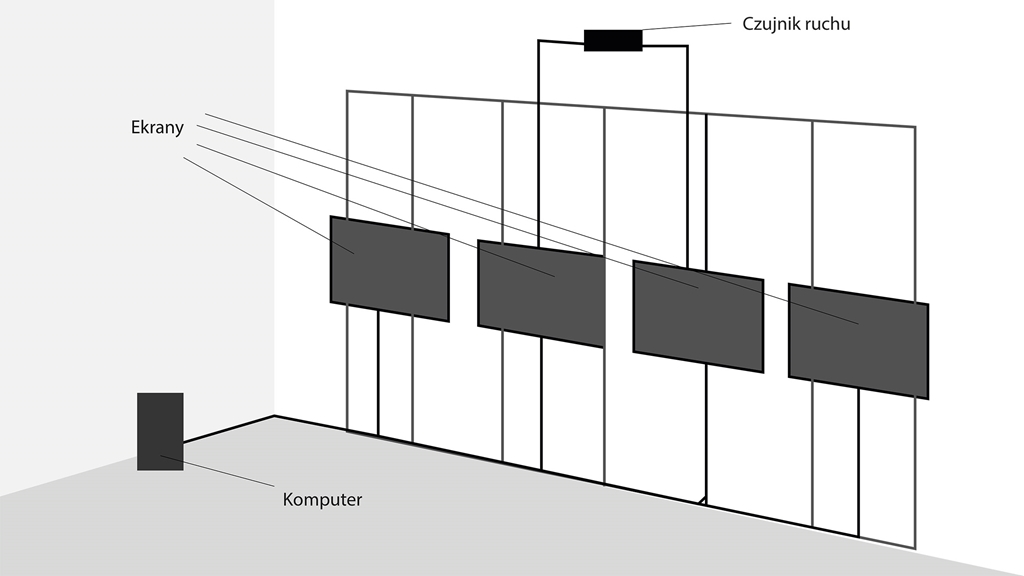
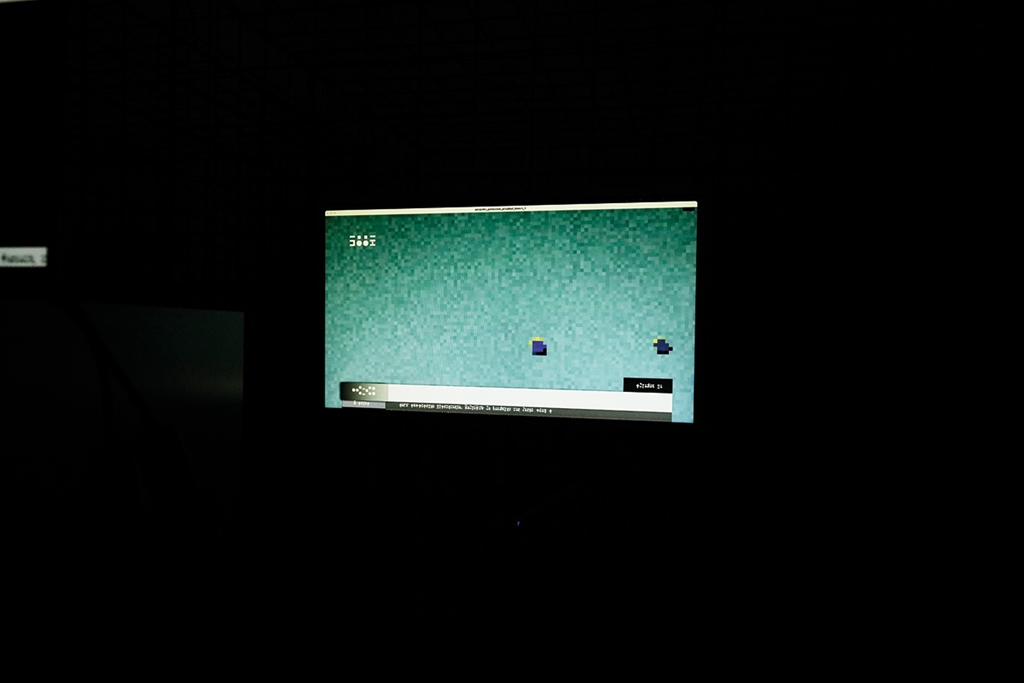
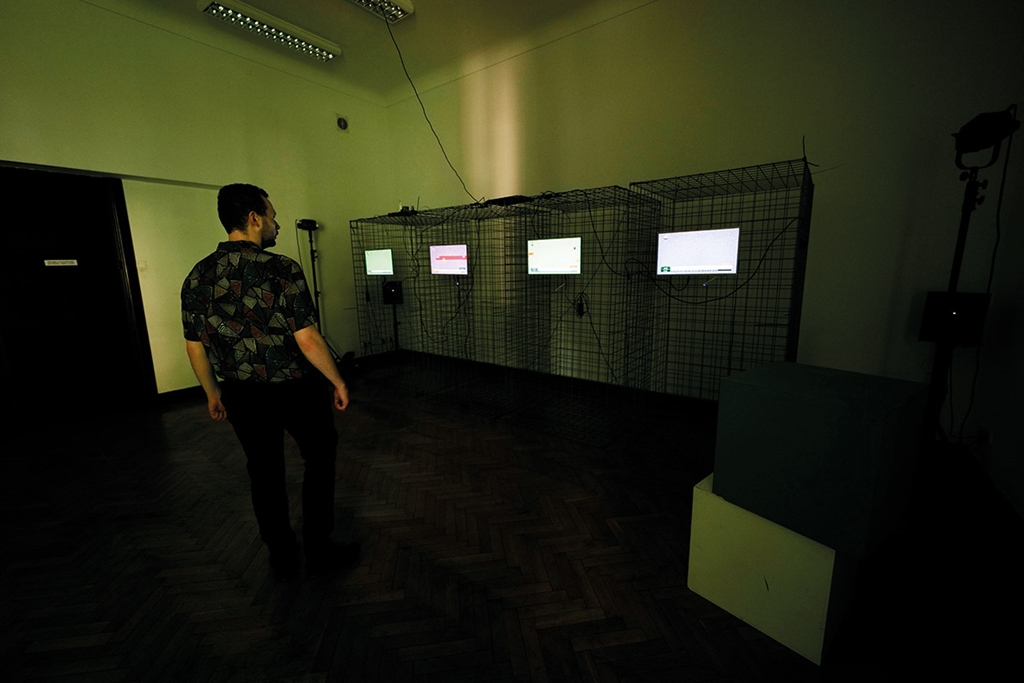
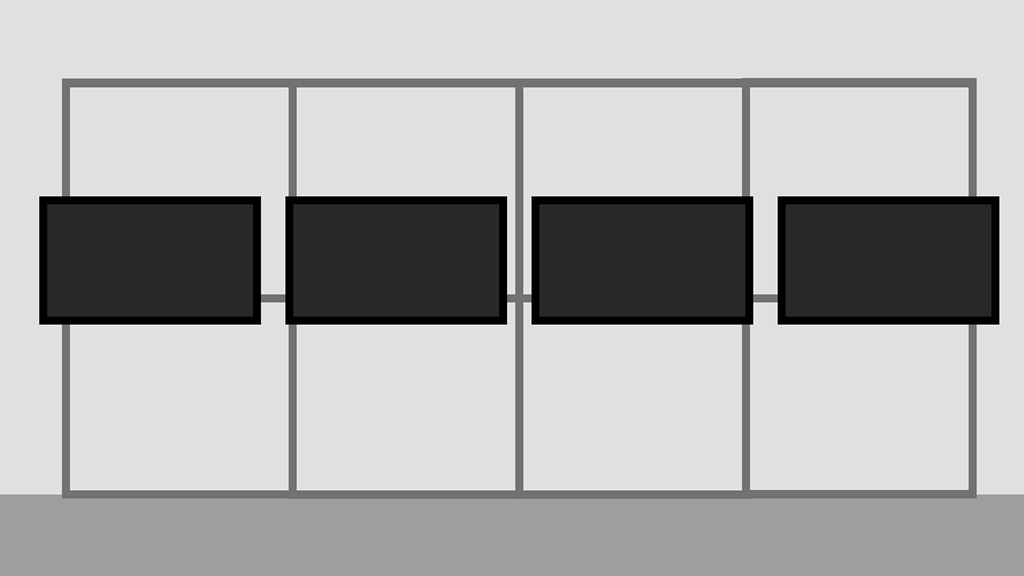
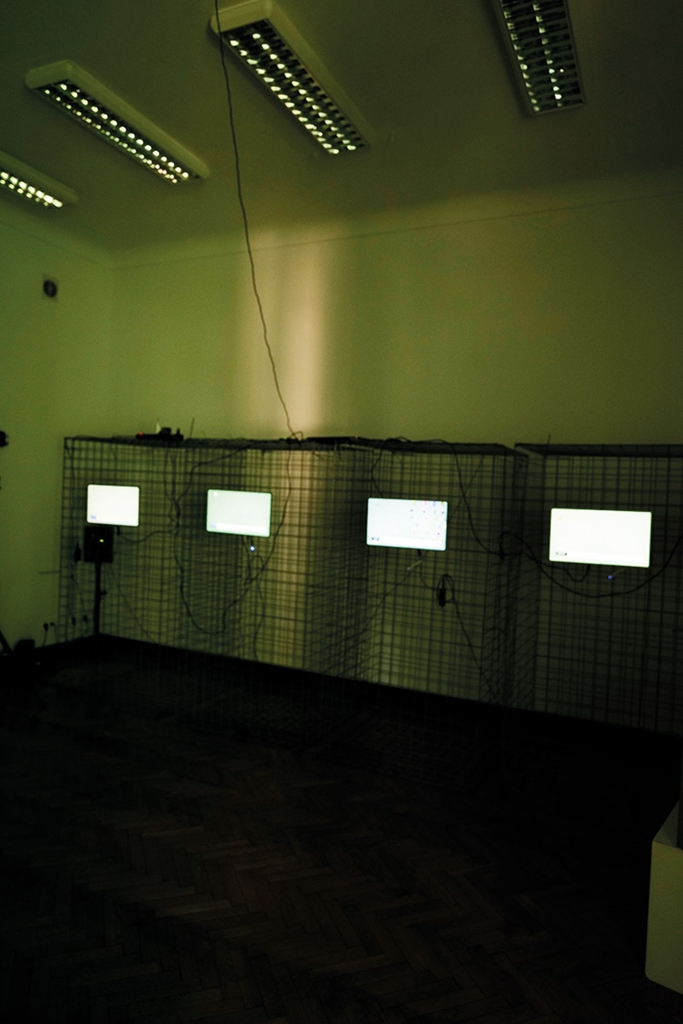
The March
Self-reflection
The March is a sort of study of the relative presentation of events by the media that forms post-truth. Every screen becomes another television channel presenting the behaviour of a set of points in a different way. And the viewer becomes involved in the events, whether they want it or not. Their role in them depends on the station: they can be aggressors, victims of violence or indifferent passers-by. Every “channel” speaks to us in an incomprehensible bubble framed in a completely random, derivative and abstract language of visual communication. The March has no beginning or end; each move is followed by another. It also has no specific purpose, seeming to exist only for the media presenting it in various shades. The March was inspired by Ryszard Radzik’s words: ‘Different truths are one remote click away from one another; they differ not only in the
evaluation of facts, but also in the very fact of their existence.’